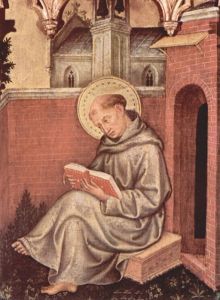“More things are wrought by prayer than this world dreams of” (Alfred Lord Tennyson)
It is truly an amazing thing that God grants us the power to change the course of other people’s lives through intercessory prayer. We take this form of prayer for granted, but when you think about it intercessory prayer is one of the greatest powers God has granted to a creature. Literally, within seconds, we can petition God for the good of other human beings. Now that’s power, and God allows us to do it all life-long. The very justification (or at least one of them) for cloistered religious communities must be the incredible value of intercessory prayer.
Given the foregoing considerations, the question then arises: – Do we value intercessory prayer? Do we use it for our neighbor’s good? Have we taken the time to consider just how important intercessory prayer is? We are commanded to be charitable to our neighbors. Intercessory prayer can help us to fulfill this duty in a wonderful and mysterious way. Saint Paul is adamant that Christians should pray for each other (1 Timothy 2:1). Since God has given us this great gift of intercessory prayer, it follows that He expects us to use it. Sometimes we feel there is very little we can do in the service of Jesus, but all of us can become more devoted to intercessory prayer.To pray for others is an important responsibility. Our prayers have the power to change lives and save souls who are precious to Jesus and Mary.
Devotion to intercessory prayer will, no doubt, increase our good-will towards others, especially those whom we don’t care for. It is also an exercise of the theological virtues of faith, hope and love which are of the essence of being Christian. And finally, per Father Faber, joy is a wonderful effect of this devotion seeing that it involves an unselfish act of seeking the good of others.
Why not make a list of the people you are going to pray for this week? Pray for those who need a job, pray for those who have left the church, pray for those who have hurt you, pray for those undergoing trials, pray for someone who is in mortal sin, pray for someone to grow in holiness and draw closer to the Lord. There are so many good things we can pray for. When you pass a hospital, pray for the person in the hospital who is closest to death. One thing is for sure: people need your prayers. I need your prayers. We should all be, in the power of the Holy Spirit, mighty apostolates of intercessory prayer, for the good of our neighbor and the glory of God.
Now if we who are on the road to salvation have been granted such an immense power to pray for others, imagine then how much more the saints in Heaven (fully and forever united to God) are qualified to pray for us! “We are one body.”
Tom Mulcahy, M.A.
Reference: I am relying entirely on Chapter Four of All for Jesus by the great F.W. Faber, and this note is merely a paraphrase or a summary or a condensing of parts of that chapter.
All rights reserved.
To LEAVE A COMMENT: click on “Leave a comment” or “Comments” below, and then scroll down to the box which says, “Leave Your Own Comment Here,” which is at the end of any comments already made. If the comment section is already present, merely scroll to the end of any comments already made.
Any ads following this note are by WordPress and not CatholicStrength.









